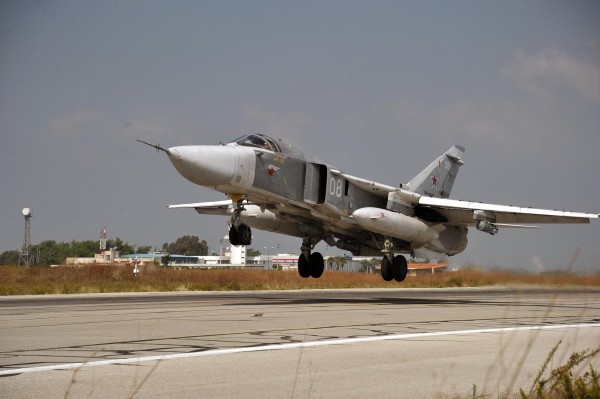

Follow us on:  
|


This Russian fighter jet is one of many SU-24s deployed at an air base in Latakia, Syria [Xinhua]
Russia has since September 2015 deployed such advanced weaponry as the SU-34, SU-30SM and SU-5S fighter jets and bombers, Tu-22M3, Tu-160 and Tu-95MS strategic bombers, and the Admiral Kuznetsov aircraft carrier used to launch the MiG-29 fighters to battle Islamic extremist forces in Syria.
Russia has also boosted its defensive capabilities in Syria and the Mediterranean by deploying the missile cruiser Moskva stationed near the Latakia coastline – used to boost air defenses – and by deploying S-400 anti-aircraft missile defense systems at its bases in Syria.
Its air defense capabilities are equal to that of the S-300 long-range surface-to-air missile system.
Mikhail Petukhov, the deputy CEO of Russia’s federal service for military-technical cooperation, said that after Russian naval ships successfully completed their objectives in the anti-ISIL operation in Syria, interest in Russian military hardware spiked, according to statements made to the Russian news agency TASS.
“The weaponry demonstrated absolute effectiveness in extra-complicated combat conditions,” he said.
According to the Stockholm International Peace Research Institute on global weapons sales, Russia was the second largest weapons exporter accounting for 23 per cent of all global arms sales.
The US continued to dominate global arms exports accounting for nearly 67 per cent of all weapons trade by 2016, SIPRI data shows.
India is Russia’s greatest arms client and is also the largest importer in the world.
One particular Russian weapon, still in development and testing, which interests India – and China – is the Armata, the first major tank to be developed in Russia since the fall of the Soviet Union.
It is based on a fundamentally new design rather than just an update of older models. There are plans to build more than 2,000 of the tank that will eventually be called the T-14.
The BRICS Post with inputs from Agencies